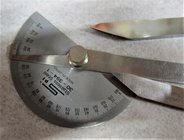odie
TOTW Team
- Joined
- Dec 22, 2006
- Messages
- 7,117
- Likes
- 9,858
This is a question I'm often asked, and I'm initiating this post to relay the following message I sent to someone who sent a PM asking for this information.....
-----odie-----
(Note: Edited for conceptual clarification.)
Thanks, XXXXXX
You know, I could write a book on this subject, but the bottom line is the grooves are done with a plain ol' spear point scraper ground to a very acute angle at the tip of the point. The real trick is to prepare the surface in such a way that eliminates all, or nearly all out-of-roundness to the geometrical shape of the bowl. Detail grooves done on a bowl that has significant out-of-round issues.....just never look very good, specifically because of the uneven appearance of the grooves.....caused by that out-of-roundness. This means mastering your tools for the purpose of eliminating the need for any aggressive sanding.....none, zip, zero, nada! (If you need to power sand the surface, you've already failed to provide a tooled surface that will be able to accept multiple details without issues. The goal should be to start sanding with fine grits, using nothing but hand held sandpaper no coarser than 180gt, but preferably 240gt.) You will always have to deal with naturally occurring warp of a bowl, but aggressive sanding is that which also contributes to destroying the perfect geometrical shape......and, that one aspect of the total equation is what you can deal with.
There will always be some amount of out-of-roundness to deal with, but if that is kept to an absolute bare minimum, the detail grooves have a crisper cleaner look to them. If the point of the spear point scraper is at a very acute angle, it can go deeper into the wood without destroying the aesthetic appeal that a wider groove will do. Going deeper will also greatly help to overcome very minor issues with out-of-roundness.
Hope that gives you a starting point for contemplating cutting good looking detail grooves.....however, my strongly held belief is.....there are no silver bullets in woodturning. For me, it took time and experimentation to find what works best.....and, that is something I can't help you with, because it's completely up to you to make these discoveries using your own initiative.
-----odie-----
-----odie-----
(Note: Edited for conceptual clarification.)
Last edited:

